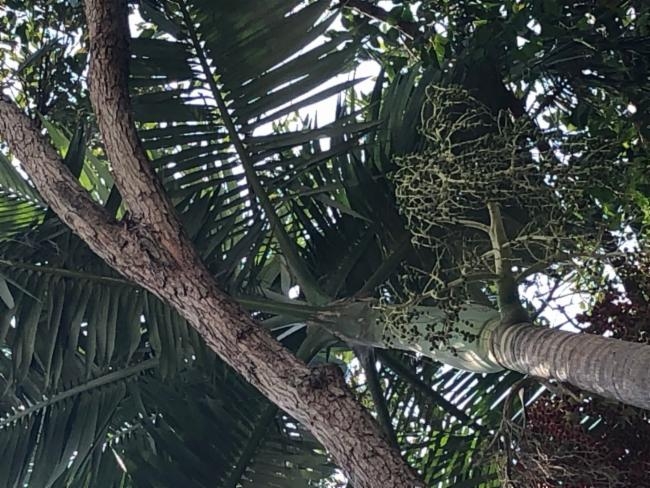Alexander Palm
(Ptychosperma elegans)
Alexander Palm (Ptychosperma elegans)
/
/

Charmaine Thomas
CC BY 4.0
Image By:
Charmaine Thomas
Recorded By:
Copyright:
CC BY 4.0
Copyright Notice:
Photo by: Charmaine Thomas | License Type: CC BY 4.0 | License URL: http://creativecommons.org/licenses/by/4.0/ | Occurence ID: https://www.gbif.org/occurrence/2423542054 | Publisher: Atlas of Living Australia |












Estimated Native Range
Summary
Ptychosperma elegans, commonly known as Alexander Palm is an evergreen palm native to the rainforests of Queensland, Australia. It typically grows to a height of 30-40 feet (9-12 meters) and a width of 10-20 feet (3-6 meters), featuring a slender, solitary trunk and a crown of elegant, arching fronds. The palm produces small, yellowish-green flowers in the summer, which are followed by red berries that are attractive to birds. Alexander Palm is valued for its sleek, vertical form and is often used in urban landscapes, as a street tree, and in tropical and subtropical gardens for its aesthetic appeal.
This palm prefers a warm, humid climate and thrives in full sun to part shade. It requires consistent moisture and well-draining soil to prevent root rot. While it can adapt to a range of soil types, it does best in rich, loamy soils. In pots or indoors, high light levels and humidity are essential to mimic its natural rainforest habitat. The palm is susceptible to leaf spot and lethal yellowing disease, particularly in sub-tropical climates, but these issues do not typically impede growth. It is important to note that Ptychosperma elegans can become invasive in regions like Florida, so gardeners should consult local regulations before planting.CC BY-SA 4.0
This palm prefers a warm, humid climate and thrives in full sun to part shade. It requires consistent moisture and well-draining soil to prevent root rot. While it can adapt to a range of soil types, it does best in rich, loamy soils. In pots or indoors, high light levels and humidity are essential to mimic its natural rainforest habitat. The palm is susceptible to leaf spot and lethal yellowing disease, particularly in sub-tropical climates, but these issues do not typically impede growth. It is important to note that Ptychosperma elegans can become invasive in regions like Florida, so gardeners should consult local regulations before planting.CC BY-SA 4.0
Plant Description
- Plant Type: Tree
- Height: 30-40 feet
- Width: 10-20 feet
- Growth Rate: Moderate
- Flower Color: Green
- Flowering Season: Summer
- Leaf Retention: Evergreen
Growth Requirements
- Sun: Full Sun, Part Shade
- Water: Medium, High
- Drainage: Medium
Common Uses
Low Maintenance, Potted Plant
Natural Habitat
Rainforests of Queensland, Australia, and evergreen palm with yellowish-green flowers and red berries
Other Names
Common Names: Cabbage Palm , Solitaire Palm , Elegant Palm , Alexanderpalme , 海桃椰子
Scientific Names: Ptychosperma elegans , Archontophoenix veitchii , Ptychosperma capitis-yorki , Actinophloeus capitis-yorki , Archontophoenix elegans , Archontophoenix jardinei , Pinanga smithii , Ptychosperma elegans subsp. sphaerocarpum , Ptychosperma elegans var. sphaerocarpum , Ptychosperma jardinei
GBIF Accepted Name: Ptychosperma elegans (R.Br.) Blume